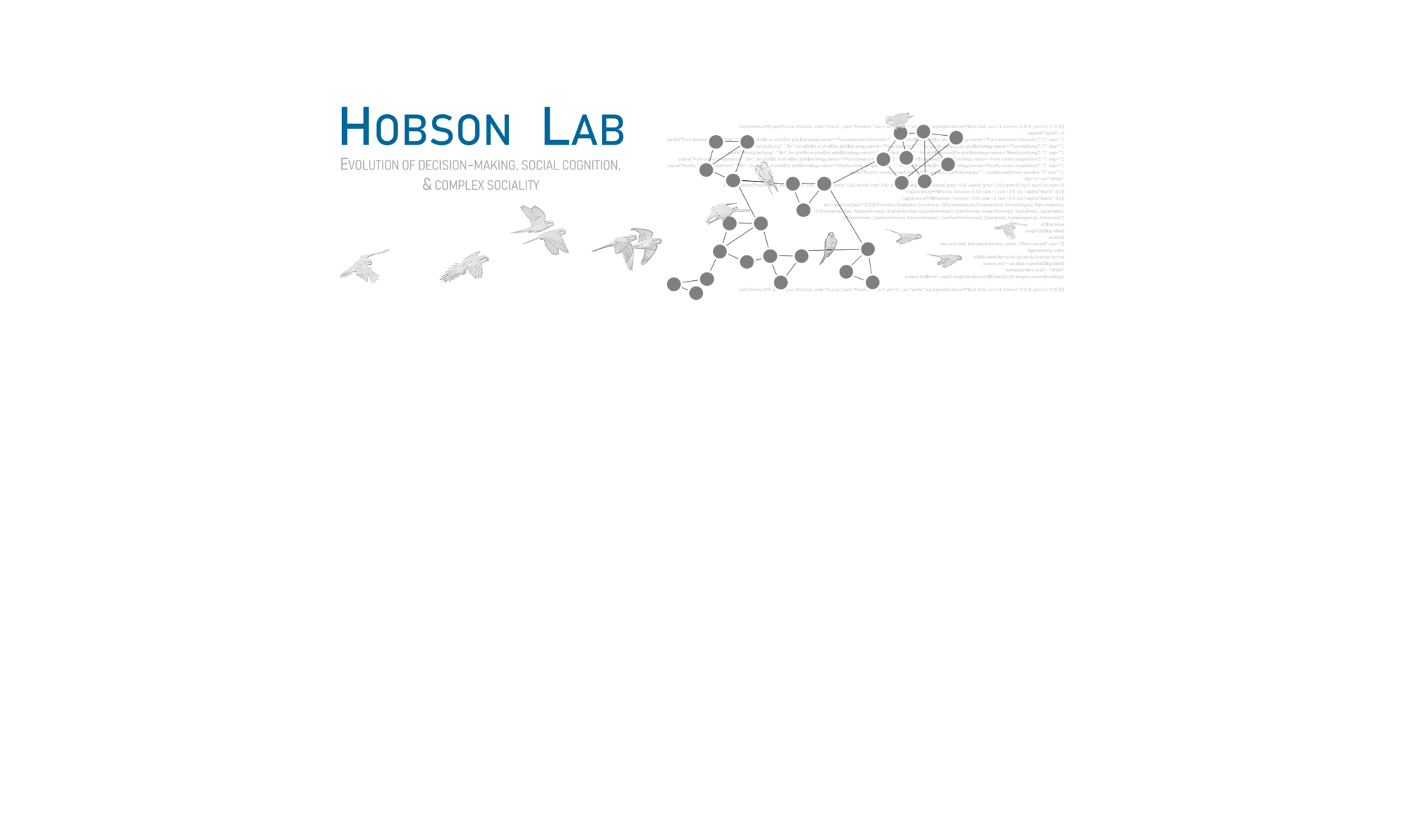My new paper was published! This project was the result of my long-term collaboration with Simon DeDeo (Laboratory for Social Minds, Carnegie Mellon) and Dan Mønster (Interacting Minds Center & Cognition and Behavior Lab, Aarhus University).
The full text of the paper is available here.
I also gave a talk featuring work from this paper, which is available here.
Significance
In animal conflict, the more information individuals have about their social world the better decisions they can make about whom to fight. Determining what animals “know,” however, has proved difficult. We reverse-engineer how information about an individual’s rank structures their aggression. Applying this method to species from ants to primates, we found that while most groups use simple rules to choose fights some groups used more information-rich patterns. A key result is that these information-rich patterns were not restricted to species thought to be more cognitively sophisticated and that their use varied within species. Our work connects sociality with information, provides possibilities for comparative analyses, and opens avenues to study the relationship between individual decision-making and social outcomes.
Abstract
Members of a social species need to make appropriate decisions about who, how, and when to interact with others in their group. However, it has been difficult for researchers to detect the inputs to these decisions and, in particular, how much information individuals actually have about their social context. We present a method that can serve as a social assay to quantify how patterns of aggression depend upon information about the ranks of individuals within social dominance hierarchies. Applied to existing data on aggression in 172 social groups across 85 species in 23 orders, it reveals three main patterns of rank-dependent social dominance: the downward heuristic (aggress uniformly against lower-ranked opponents), close competitors (aggress against opponents ranked slightly below self), and bullying (aggress against opponents ranked much lower than self). The majority of the groups (133 groups, 77%) follow a downward heuristic, but a significant minority (38 groups, 22%) show more complex social dominance patterns (close competitors or bullying) consistent with higher levels of social information use. These patterns are not phylogenetically constrained and different groups within the same species can use different patterns, suggesting that heuristic use may depend on context and the structuring of aggression by social information should not be considered a fixed characteristic of a species. Our approach provides opportunities to study the use of social information within and across species and the evolution of social complexity and cognition.








